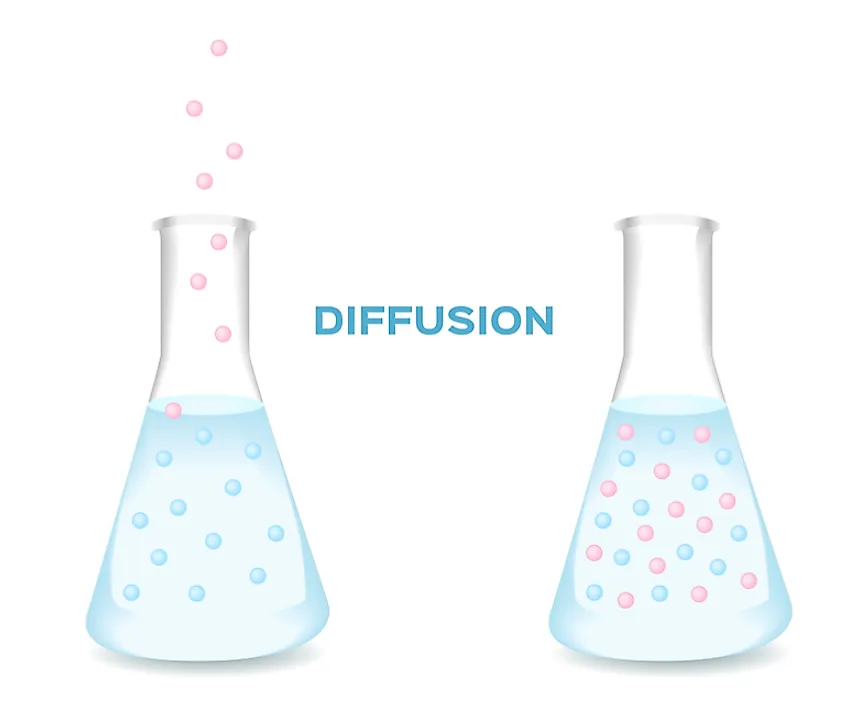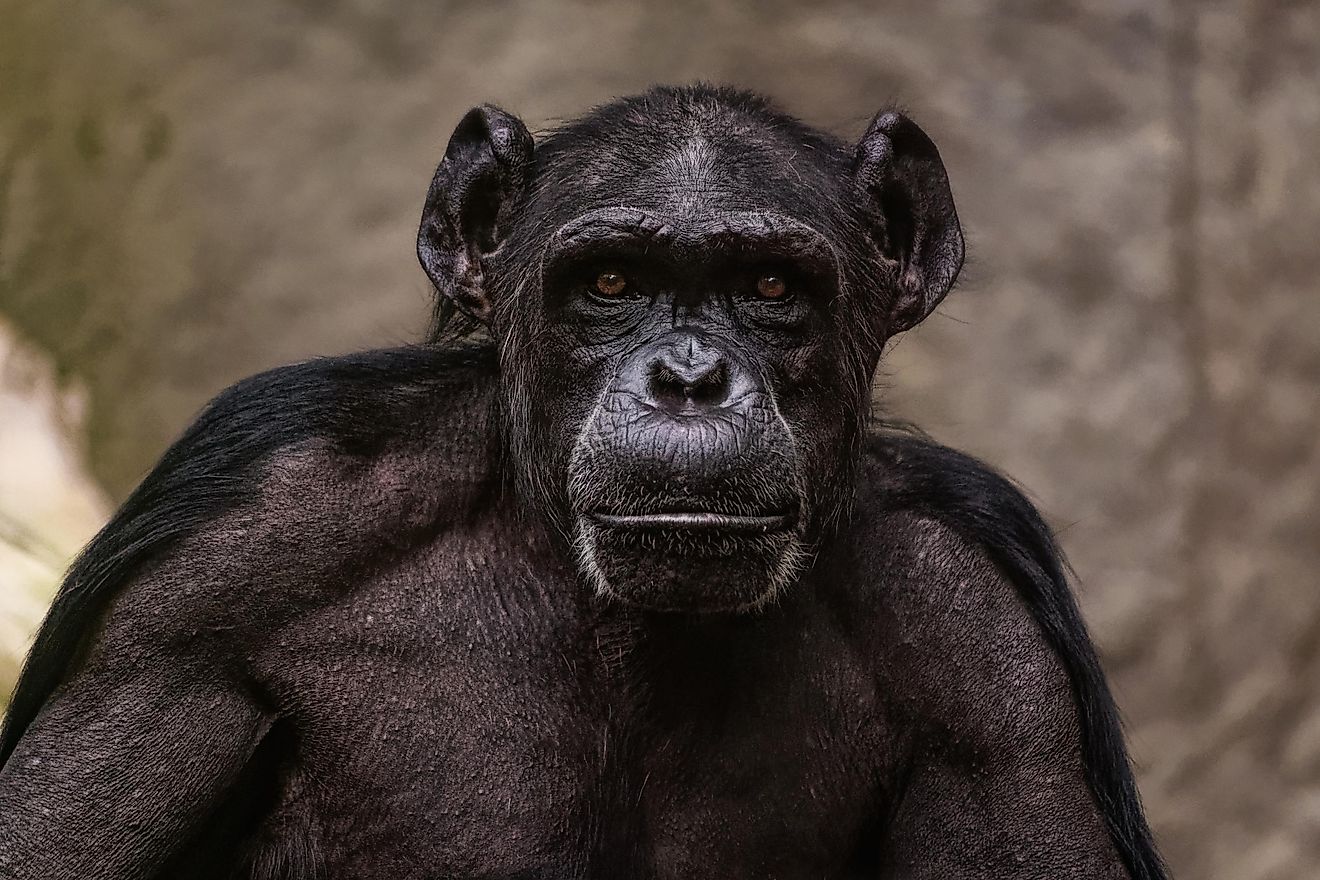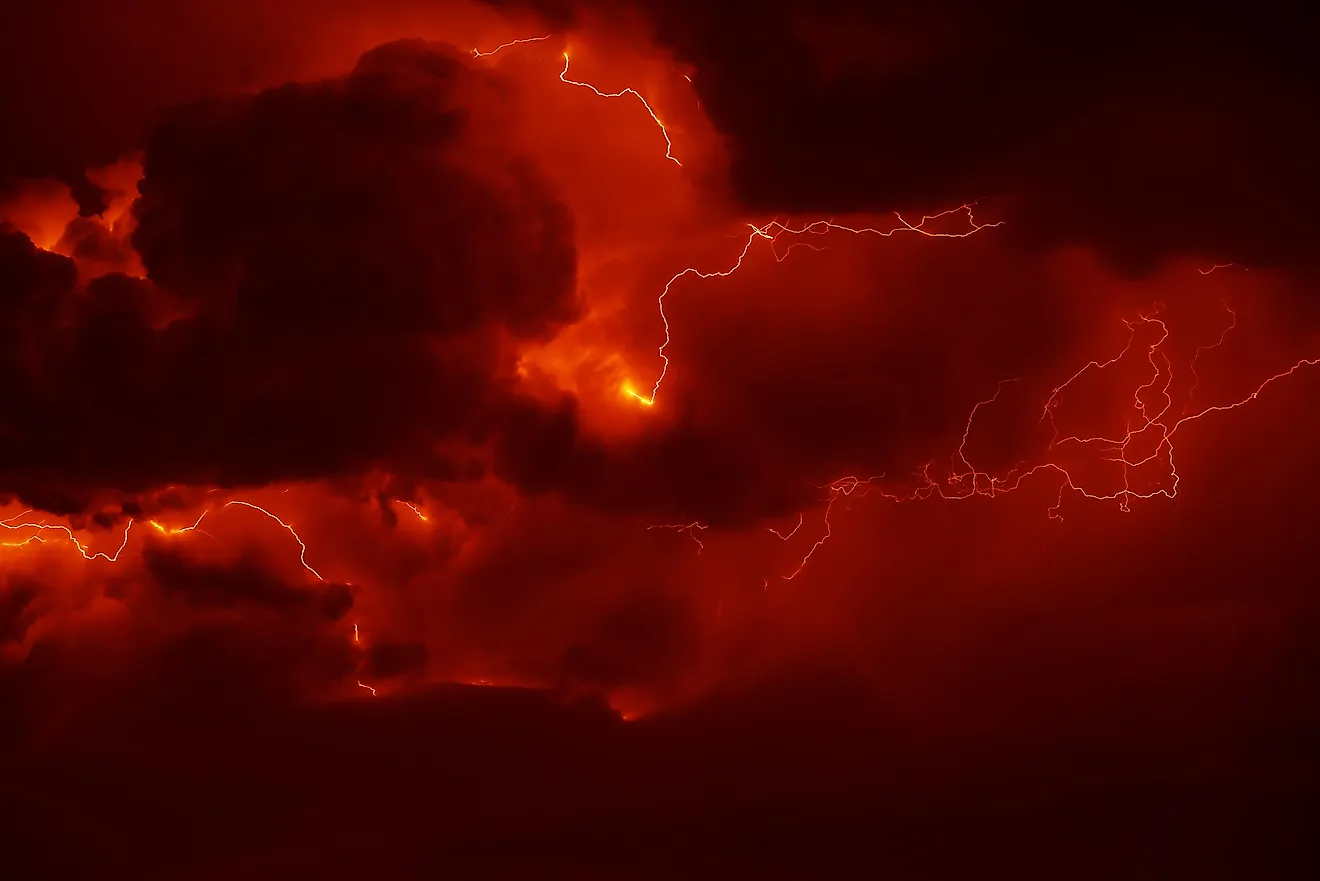What Is Diffusion?

Diffusion is the process in which atoms or molecules move from a region of high concentration to an area of low concentration. In most cases, diffusion occurs in gases and liquids. During diffusion, the movement of matter continues until there is an even distribution. The movement pattern depends on the concentration gradient of the fluids or gases involved. The term diffusion comes from a Latin word "diffundere" which means "to spread out." Apart from diffusion, other ways in which substances move from one region to another include active transport and osmosis. The concept of diffusion affects many disciplines such as biology, physics, finance, economics, sociology, and chemistry.
False Diffusion
False diffusion refers to the error that occurs when one uses the upwind differencing formula of calculating multidimensional cases of convection-diffusion. The error is absent when the flow of property is parallel to each major axis.
The Diffusion Process
There are two ways in which diffusion occurs: the phenomenological approach and the atomistic point of view. According to the phenomenological approach, diffusion occurs when a substance moves from a highly concentrated region to a low concentrated region, which is based on Fick’s law of diffusion. On the contrary, the atomistic view understands diffusion as a result of a random walk of particles in a substance. Two scholars, Robert Brown and Albert Einstein, devised this view. Brown is responsible for the Random Walk Theory, which he designed in 1827, whileEinstein devised the atomistic properties of diffusion and the Brownian motion theory.
Factors That Affect Diffusion
Four main factors affect the diffusion of fluids. One is the concentration gradient. Higher concentration gradients will lead to higher rates of diffusion and vice versa. Second, temperature also affects diffusion, since it influences the kinetic property of matter. When temperatures are elevated, the speed of particles in motion increases, leading to faster diffusion. Third, diffusion depends on the density of a gas or liquid. Whenever the diffusing substance has a lower density, it becomes lighter, and can diffuse faster. Density is slightly influenced by the size of the particles as well.
Examples of Diffusion
One example of diffusion is observed in laboratory experiments. Whenever the hydrogen sulfide compound is used, it produces a pungent smell. With time, everyone in the lab can smell the gas. This smell is evidence of diffusion of the gas in the room. The gas will diffuse slowly in the laboratory until it achieves a state of equilibrium. Another common example is food coloring used in the kitchen. When food colouring is mixed in water and then added to food, it spreads homogenously in the food. Finally, when one sprays perfume in a room, it spreads throughout the room, making it possible to smell the scent from anywhere in the room. The spread of the scent is an example of diffusion of gas in the atmosphere. In sociology, an example of diffusion is the concept of cultural diffusion, which claims that the culture of one ethnic group or race may quickly spread to another.











